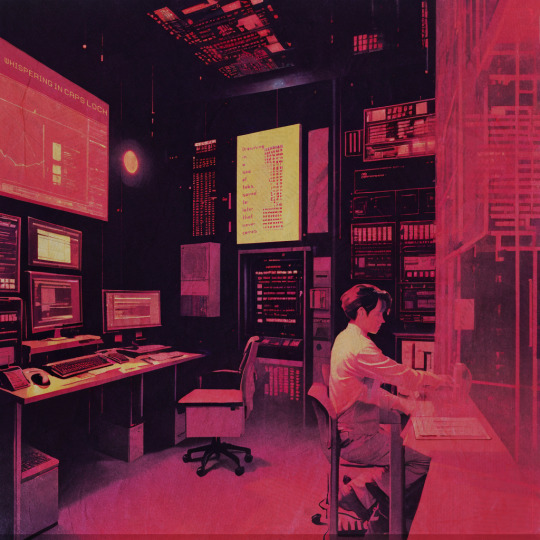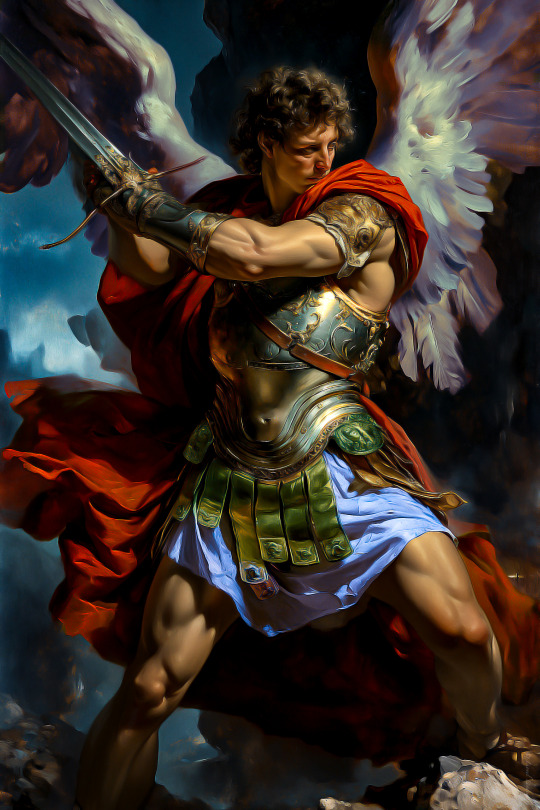#computationalcreativity
Explore tagged Tumblr posts
Text
2. Planck's time (tₚ).
At the heart of the computational dramaturgy concept lies the notion that the world, viewed as a Universal Turing machine, does not possess time as a separate essence from matter. Rather, the human perception of time is akin to a computational program, where each step corresponds to one Plank's time. This also affects the spatial coverage that can be achieved within a single "turn," lasting for a duration of a Plank's time and indivisible into smaller units.
In our proposition, we suggest that during this incredibly brief interval of 5.39 × 10^(-44) seconds, only one complete computational event takes place, which we refer to as dramaturgy. Within this interval, there simply isn't enough time for more than one full computation or dramaturgical occurrence to unfold within a single atom of space. Therefore, we consider this rate of step changes in our universe's Turing machine to be fundamental.
Let's consider the magnitude of computational events occurring within our universe. The ratio of these monumental dice throws is an astonishing 1.846 × 10^43 throws per second! That’s how much Planck’s times fit in our regular second. This number is more comparable to the total number of atoms in the observed universe than to the span of a human lifetime.
To put it in perspective, one second is approximately equal to 1.846 × 10^43 Planck's times. In one year, there are approximately 5.8 × 10^50 Planck's times, and over the course of the universe's existence, which spans approximately 13.7 billion years, there have been approximately 8 × 10^60 Planck's times.
Within this unfathomable span of time, our reality has undergone around 8 × 10^60 computational steps, progressing from minimum possible entropy ever existed to the complexities of our present world during it’s natural process of increasing entropy. This encompasses everything from profound scientific discoveries to the light-hearted amusement of cat memes and various internet diversions. Surfers on the waves of reality.
8000000000000000000000000000000000000000000000000000000000000
On the other hand, this number is far beyond infinite and, upon reflection, it even appears surprisingly small. Nevertheless, it serves as a reminder that despite the vastness of the universe, each individual entity holds a finite number of chances to shape their own destiny and make an impact on the world.
And Average life of 70 year old person means that human entity was present for 4 × 10^52
clicks of our Mighty Turing Machine of the universe! And this is not just a number. It’s a minimum possible dramaturgical quantum steps sequence of the entity holding dramatic potential that can actually make choice and effect the system! Everyone who you know and you yourself have about 4000000000000000000000000000000000000000000000000000 chances to get your shit together and become a leader and a master of your life! Even if it sometimes feels you got none of that chances at all.
For comparison, the estimated number of atoms in the observable universe ranges from 10^78 to 10^82. The observable universe is thought to be approximately 93 billion light-years in diameter. This means that you have plenty of chances to affect the dramaturgy of reality if you live long enough. You are part of a decision-making machine that has the potential to communicate at a rate that is more than half of the number of atoms in the observable universe.
The point is to emphasize the importance and "size" of a human being, which is truly outstanding.
It is fascinating to note that the average density of matter in the universe is about 5 atoms per cubic meter, whereas the average density of the Earth, considering its rock material, is approximately 10^22 atoms per cubic meter.
In the vastness of space, an average seemingly empty cubic meter typically contains about 5 atoms with the potential to engage in the unfolding of dramaturgy. On the other hand, planet Earth, along with your own body, possesses an impressive density of approximately 10^22 atoms per cubic meter, ready to engage in all kinds of dramaturgies. Just imagine the immense possibilities and options you possess compared to the average observable universe!
It truly is a miracle that within your lifetime, you have approximately 4 × 10^52 chances to act as you desire, and an abundance of 10^22 atoms per cubic meter to manipulate and play with in every moment. You are a god within this system.
If we were capable of perceiving each individual Planck's time, living our lives and experiencing the unfolding of the universe would be an eternity in itself. However, higher-dimensional entities that might exist beyond our three-dimensional + time world and conventional understanding of time reside within the realm of Planck's time. To them, it appears as a frequency or rhythm, much like the sound of a motorcycle engine. They can hear it and enjoy the ride. These entities possess the remarkable ability to perceive each small click of Planck's time, allowing them the luxury of taking as much "time" as they need to make personal decisions within each click. They interact with our world through various systems, such as corporations, marriage, Ronald Mc Donald, operating on a different level of consciousness, free from the constraints of our limited temporal perception.
#dramaturgy#computationalcreativity#quantum physics#innovation#dramaturgical potential#quantum dramaturgy#physics of important things#science#philosophy#psychology#psychic#psychonauts#fate#god#soul#wolfram#Donald Hoffman#game theory#weird#bizarre#creepy#odd#weird stuff#strange new worlds#life is strange
4 notes
·
View notes
Text

Whispering in Caps Lock. 🔓
1 note
·
View note
Text

ARCHANGEL
#oil-ai#aIartistry#robotImagery#digitalMindArt#neuralAesthetic#cyberneticVisions#algorithmicArtistry#virtualArtistry#machineLearningVisions#computationalCreation#syntheticImageCulture#midjourney#abstract#digitalartistr#color#light#illustration#tumblr#Picture#art#angel#sword
180 notes
·
View notes
Text
Submit Your Work to GeneratedArt Publications on Medium

Do you have a passion for generative art, AI art, creative coding, or generative design? Are you looking to share your insights, ideas, and stories with a wider audience? Submitting your Medium story to GeneratedArt publications can be a great way to get your work seen by people who share your interests. In this article, we will walk you through the steps to submit your Medium story to GeneratedArt publications and provide you with some tips to increase your chances of getting published. Whether you are a seasoned writer or a newcomer, we hope that this guide will help you get your work seen by the right audience.
Getting started with Medium
- Create a Medium account: The first step is to create a Medium account if you haven't already. You can go to www.medium.com and sign up with your Google or Facebook account or use your email address to create a new account. - Follow GeneratedArt publication: Once you have a Medium account, search for "GeneratedArt" in the search bar, and click on the GeneratedArt publication page. Then click on the "Follow" button to follow the publication. - Write your story: After you have followed GeneratedArt publication, you can start writing your story. Click on your profile picture, select "New Story", and start writing your story. - Become a writer on GA: Before you can publish a story to GeneratedArt publications you must become a writer for GeneratedArt publications on Medium.com, you may be required to fill in a form to be added as a writer. Click here - Submit your story: Once you published your story, make sure to select "GeneratedArt" from the "Add to Publication" dropdown menu. Once you have added the story to the publication, click on the "Submit for Review" button. - Wait for approval: Your story will be sent to the GeneratedArt publication editors for review. If your story is approved, it will be published on the GeneratedArt publication page. If your story is not approved, you will receive feedback from the editors on how to improve your story.
Guidelines
- Topics we accept: General: Algorithmic art, Interactive installations, Artificial intelligence in art, Computational design, Code-generated music, Procedural animation, Dynamic systems, Data visualization, Emergence in art, Non-linear storytelling, Virtual and augmented reality experiences, Interactive generative art, Glitch art, Fractal art, Computer-generated poetry, Digital fabrication in art, Augmented creativity, Generative typography, Evolutionary art, Machine learning in art. Learning technologies: Code editors and tools for creative coding, Programming languages (such as Processing, Python, JavaScript, etc.), Generative design software (such as Grasshopper, Houdini, or Dynamo), Image processing software (such as Photoshop or GIMP), 3D modeling software (such as Blender or Maya), Physical computing platforms (such as Arduino or Raspberry Pi), Motion graphics software (such as After Effects or Cinema 4D), Text editors (such as Sublime Text or Atom), Version control software (such as Git), Open-source libraries and frameworks (such as p5.js or OpenCV). - Introduction: Your work is all about making a lasting impression. The same goes for your writing, particularly the introduction of your Medium articles. We receive a lot of submissions that jump straight into the tips or the methodology, without giving any context. Instead, take your time to craft a compelling introduction that sets the stage for the rest of your article. Paint a vivid picture of a real-life example, drop us into the action, or come up with an attention-grabbing way to introduce us to your story, be it a shocking research finding or a little-known statistic. Remember, the introduction is your chance to capture the reader's attention and entice them to keep reading. - Research: It's important to do your research and provide evidence to support your arguments. We often receive submissions that make assertions without any authoritative sources or research to back them up. This is a common mistake that can weaken the impact of your writing. To avoid this, take the time to find reliable sources, including experiences of your work or published research or expert opinions, and include links to support the factual assertions in your writing. Even the most creative and innovative ideas need to be grounded in reality. By providing solid evidence, you'll strengthen your arguments and make a more compelling case for your ideas. - Headlines: You know the importance of creating something that catches the eye and captures the imagination. The same is true for your writing. The headline of your Medium article is your chance to grab the reader's attention and entice them to read more. While we can help you refine your headline, it's important to consider what makes a good one. Take a look at the stories that immediately draw you in - do their headlines sound like clickbait-y advertisements? Or do they provide thoughtful, high-quality propositions that leave you curious and wanting to learn more? As a generative artist, you have a unique perspective that can provide new insights into the world of generative art. Make sure your headline reflects this and entices readers to dive into your article. By mastering the headline, you'll increase the chances of your writing being read and appreciated by a wider audience. - Transplant ideas: You know that the creative process is about finding new and innovative ways to express yourself. The same is true for your writing. We understand that you may need to rely on other publications to support your facts and arguments, and we encourage this. However, it's important to avoid the temptation to transplant another writer's ideas entirely into your own work. - The why: You know that your work is about creating something that engages, inspires, and challenges the viewer. The same is true for your writing. Before you start writing your Medium article, it's important to consider why someone should take the time to read it. Will it add value to their lives? Will it entertain them? Could it change the way they think about generative art? - Avoid aggressive call-to-actions: It's natural to be passionate about your work and your business. However, it's important to avoid overly aggressive calls to action in your Medium articles. While it's okay to talk about your business, it's important not to turn off your audience with a hard sell. Instead, focus on creating content that provides value to your readers and encourages them to engage with you in a more organic way. By offering insights, techniques, and inspiration in your writing, you can establish yourself as an authority in the field of generative art, and your readers will be more likely to seek out your work and your business on their own. - Fill form: If you aren't a writer GeneratedArt publications already, fill in the form available here before you can publish to GeneratedArt publications. Generative art is a rapidly growing field that offers a unique blend of creativity, innovation, and technology. As an author, your work is a reflection of your unique perspective on the world around you, and your writing can provide valuable insights into your creative process and the challenges you face. By following these tips for writing Medium articles for GeneratedArt publications, you can create content that engages and inspires your readers, establishes you as a thought leader in the field of generative art, and builds your reputation as an expert in the industry. So, take the time to craft compelling introductions, do your research, master your headlines, find your own creative voice, and avoid overly aggressive calls to action. By doing so, you can create content that resonates with your audience and helps to push the boundaries of generative art even further. Read the full article
#AIart#algorithms#computationalcreativity#creativecoding#digitalart#generativeart#interactiveart#machinelearning#programming#visualart
0 notes
Link
Top 5 Tech Articles From CES 2023 In Las Vegas
0 notes
Text
Casual Games
If you are having an interest in designing your own hyper-casual games then you should go and contact Jet Play services, they are one of the best studios. Yes, hearing correct they will help you in every possible way if you are having interested to design your own hyper-casual game. Go ahead and contact them today.
0 notes
Text

_
#portraitphotography #aiart #generativeart #digitalart #newmediaart #artandtechnology #futureofart #computationalcreativity #creativecoding #algorithmicart #neuralnetworkart #artificialintelligence #texttoimage #machinelearning #datavisualization #algorithmicdesign
8 notes
·
View notes
Photo

What Sticks Around June/2018 A visualization of a #randomwalk -> #neuralstyled #art #datadrivengraphics #abstractpainting #art2018 #newart #avantgardeart #abstractart #abstract #treeart #tree #winter #ice #alternativeart #digitalart #computerart #styletransfer #deepdreamgenerator #deepstyle #neuralart #mathart #machinecreativity #computationalcreativity #creativity #creative #modernartist #contemporaryart https://www.instagram.com/p/Brs-GSxjtoS/?utm_source=ig_tumblr_share&igshid=1uxuva8k75rb6
#randomwalk#neuralstyled#art#datadrivengraphics#abstractpainting#art2018#newart#avantgardeart#abstractart#abstract#treeart#tree#winter#ice#alternativeart#digitalart#computerart#styletransfer#deepdreamgenerator#deepstyle#neuralart#mathart#machinecreativity#computationalcreativity#creativity#creative#modernartist#contemporaryart
0 notes
Photo

via @naotokui
https://t.co/isDn8CiIKC 今日の講義のメモ / リンク集です! #ComputationalCreativity概論
— Nao Tokui (@naotokui) November 17, 2018
0 notes
Text

Hi everyone! My name is Sergio, and I'm a master of dramaturgy with 20 years of experience in the field. This blog is dedicated to my latest book, "Physics of Important Things: Basics of Computational Dramaturgy."
It introduces a completely new framework exploring the quantum states of dramaturgy. The "hero-way-goal" perception of life sheds light on concepts such as dramaturgical potential, atoms of space, Fact-result and Reaction events, formulas to transcribe Soul, Observer, Fate, and GOD (Generator of Dramaturgy), all within a Planck's constant world. It suggests that we might be influenced by multidimensional entities through the "skins" of a "good mother" or a "bad cop," compelling us to act exactly as planned. As agents of entropy, we become its most effective tools in the 3D reality.
My book helps you surf the computational edge of unfolding entropy waves, much like a pro surfer. Not controlling the wave but knowing what to do. Numerous profound thought experiments are presented within its pages, offering a fresh perspective on questions such as why you live and why everything around you is the way it is.
Each day, I'll be posting a chapter or two from the book, along with amusing images and videos related to quantum dramaturgy and additional thoughts on the topic. This provides us with an opportunity to discuss and exchange insights. Feel free to ask anything.
For those eager to explore the entire book at once, without waiting for new chapters, you can download the complete book "Physics of Important Things." for FREE
Available at SSRN:
Also avalibele at:
Medium:
https://medium.com/@sergiiozerianskyi
Zenodo:
https://zenodo.org/record/8201771
Academia: https://www.academia.edu/105137430/Physics_of_Important
My ORCID ID: https://orcid.org/my-orcid?orcid=0009-0007-7206-4088
#dramaturgy#computationalcreativity#quantum physics#innovation#dramaturgical potential#quantum dramaturgy#physics of important things#science#philosophy#psychology#psychic#psychonauts#fate#god#soul#wolfram#Donald Hoffman#game theory#weird#bizarre#creepy#odd#weird stuff#strange new worlds#life is strange
2 notes
·
View notes
Photo

The Deformation Is Not Obvious Jun/2018 #modernart #newmedia #deepdreamgenerator #artistsoninstagram #artistsontumblr #contemporaryart #neuralstyle #neuralartwork #neuralart #deepart #machinelearning #ai #artificialintelligence #computerart #computationalcreativity #creativity #avantgarde #avantgardeart #art2018 #persianart #tehranphotography #rain #rainylandscape #rainy #rainysky #art #experimentalpainting #digitalpainting — view on Instagram https://ift.tt/2L8iAlS
0 notes
Text

CLOUD 7
#oil-ai#aIartistry#robotImagery#digitalMindArt#neuralAesthetic#cyberneticVisions#algorithmicArtistry#virtualArtistry#machineLearningVisions#computationalCreation#syntheticImageCulture#midjourney#abstract#digitalartistr#color#light#illustration#tumblr#Picture#art
64 notes
·
View notes
Text
Why Are Hyper-Casual Games So Very Popular Amongst Different Age Groups?
Hyper casual games are currently one of the most popular games because they are having a wide audience reach and are having the potential to be monetized for bringing very high profit. If you are not sure whether creating your own hyper-casual game is good or not, then we would recommend you to read this article. This is because here is the information that will tell you why hyper-casual games are successful. And furthermore, this will satisfy you to make your own as well. So, just jump into the article to gain lots and lots of information.
Lightweight: Hyper casual games are one of the oldest games with a small memory size that can handle them. If a game is light in weight and helps people in removing stress and tensions from their life then the game will definitely read a higher audience even more than the present audience. Hence, this is the first and most important reason that makes hyper-casual games successful and says that people should create their own as well to earn profits.

Widest Audience: As a rule, hyper-casual games are the type of games that are having small mechanics and provide people instant play. This means that you just need to open the game and you will be directed to play after that. Moreover, there are infinite levels in these such games and the mechanics are also very interesting.
Due to this reason only they have reached the widest audience. In simple words, more and more people get attracted to such games providing the owner with lots of profits. Therefore, this is another reason why one should go and think of creating their own hyper-casual games. However, if interested in creating your own AI and Mobile Gaming then Jet Play is the top-recommended service. Yes, Jet Play is the studio that is working for years to provide people with the best hyper-casual games. Go and have the services.
Low Commitment: Hyper casual games don’t have a length playing session, so they are perfect as time-wasters. People can easily handle such types of games while traveling, during a lunch break, in the bathroom, or anywhere they want. Ergo, due to the low commitment as well these are the games that have become very much successful.

Easily Monetized: One of the most important facts why hyper-casual games are considered to be successful is that they can easily be monetized. In simple words, these are the games due to which people can earn a lot of benefits. So, this is again a reason why each and every person in the world is interested in making a hyper-casual game of their own.
To conclude, if interested in creating your own Hyper Casual Mobile Games then you should go and contact Jet Play. Jet Play is one of the best studios that help people in the creation of the best games, according to the needs and choices. Go and try their services now.
#BestHyperCasualGames#DeepLearning#machinelearning#AIandMobileGaming#computervision#computationalcreativity
0 notes
Text

☀️
_
#portraitphotography #aiart #generativeart #digitalart #newmediaart #artandtechnology #futureofart #computationalcreativity #creativecoding #algorithmicart #neuralnetworkart #artificialintelligence #texttoimage #machinelearning #datavisualization #algorithmicdesign
3 notes
·
View notes
Text
3.2 Three dimensional worm in a two dimensional world.

Famous experiment with a 4D worm moving through a 3D world serves as a useful starting point for understanding Fundamental Dramaturgy. To visualize this, we can imagine downgrading each dimension by 1. Our 3D world becomes a flat 2D sheet of paper, and the 4D worm, which represents a dramaturgical potential holder, is represented as an ordinary 3D worm.
Now, we have a worm that can move up and down through the sheet of paper. As observers living in a 2D world and experiencing it as flat, we perceive the 3D worm passing through our reality as a suddenly appearing circle shape, which is just a slice of the entire worm in a given period of time. When the worm completely goes out of the sheet, it appears to vanish for the 2D observers. If the worm re-enters the paper sheet in a different location, it appears as a teleportation of a circle from one spot to another to the 2D observers.
Another interesting effect occurs when the worm gets funky and starts waving through the paper sheet and simultaneously penetrates it in different spots. For the 2D observer, it appears as if the worm circle has appeared in many different places at once.
This visualization of the "4D worm" provides the closest experience we can have to understand the nature of dramaturgy potential holders. Just like the 3D worm, the dramaturgy of a certain kind happens simultaneously in many places, but it is essentially one unified entity with a shared purpose and physics.
Some powerful dramaturgical entities penetrate our reality in multiple places simultaneously and exert influence within the fabric of our reality according to their will.
Take, for example, the Coca-Cola company. This megalithic, 131-year-old entity observes us through millions of its red and white eyes in the form of exterior advertisements. It feeds billions of human brains with sugar and bombards us with the voices of influencers and promotional campaigns. The multidimensional entity of Coca-Cola's dramaturgy potential holder has woven itself into our minds and shapes our behaviour. It is a strong and almost immortal force. Do you think there is a single person who owns and controls Coca-Cola and can abort it? No. Can Coca-Cola control life of a person? I think in many ways yes.
#dramaturgy#computationalcreativity#quantum physics#innovation#dramaturgical potential#quantum dramaturgy#physics of important things#science#philosophy#psychology#psychic#psychonauts#fate#god#soul#wolfram#Donald Hoffman#game theory#weird#bizarre#creepy#odd#weird stuff#strange new worlds#life is strange
1 note
·
View note
Text
1. Computational dramaturgy language.
To gain a deeper understanding of the nature of quantum dramaturgy, it is crucial to familiarize oneself with several key concepts that serve as the foundation of contemporary science accepted within the scientific community. These concepts form the building blocks of our understanding.
Planck's constant.
Planck's constant is a fundamental constant that plays a vital role in quantum mechanics. It quantifies the energy carried by individual particles and establishes the scale for the granularity of the quantum world. Dramaturgy adheres to quantum laws just as rigorously as any other fundamental study. Although Planck's constant is not directly observed, its theoretical implications are integrated into our everyday lives. Dramaturgy unfolds in Planck's steps.
Speed of light constant.
The speed of light in a vacuum is a universal constant that serves as an absolute limit on the speed at which information or fermions can travel. Planck's time and the speed of light are constants and limitations that unite us as observers within the quantum realm. Understanding, researching, and conquering this realm is a formidable task that is best approached through dramaturgy. The speed of light is an essential component of Einstein's theory of relativity, quantum mechanics, and computational dramaturgy. Just like any other form of information in this world, dramaturgy is quantized and propagates at the maximum speed of light.
The concept of entangled particles, which can seemingly “teleport” information faster than light, instantly across any distance, will be separately discussed further, as it constitutes a fundamental property of dramaturgy.
Atom of space.
The concept of the atom of space, introduced by Steven Wolfram and his computational physics, pertains to the fundamental building blocks of the fabric of spacetime. In the context of quantum dramaturgy, the atom of space represents the smallest indivisible unit of space, possessing unique properties and interactions, primarily of a dramaturgical nature. It’s true because if you didn’t care and nothing literary cared about something else on fundamental quantum level, no interactions or perception of those interactions would occur. No dramaturgy – no anything.
Multidimensional perception.
Computational Dramaturgy invites us to expand our understanding beyond the limitations of our familiar four-dimensional perception (3D space + time). It suggests the existence of additional dimensions that may profoundly influence and shape our reality. Dramaturgy provides us with an effective and mathematical means to experience these dimensions and comprehend their impact on our lives, even without a complete understanding of their other properties, except for the fact that they differ from the dimensions we are familiar with. While the exact nature of these dimensions remains elusive, we can perceive and classify their influence on observable reality. The relentless drive of evolution, the power of the sun, heat, and the captivating force of dramaturgy are truly awe-inspiring.
Out-of-the-box perspective on entities.
Computational dramaturgy challenges conventional perspectives on entities such as corporations, fan clubs, popular songs, money, or patriotism. It encourages us to explore their dynamic nature, their influence on our collective drama, and their interplay. Why is it that when examined individually, everyone appears to be a "good" person, yet on a larger scale, wars, pain, and suffering persist? Where does this stem from? Is there something higher than humans that makes real decisions? Dramaturgy holds the key, offering glimpses of multidimensional intrusion into our familiar four-dimensional understanding. It has personal motives and roles, it has tools in this world and it act right now.
Thus, most people believe there exists something greater than us, but its nature is bizarre and can only be examined and processed by our brains through the lens of computational dramaturgy.
Perception of time as entropy.
Quantum dramaturgy invites us to reconsider our perception of time as a linear progression. It explores the realms of non-linearity and multidimensionality, where the boundaries between past, present, and future become blurred.
In the realm of computational dramaturgy, all that is required is Planck's Time, the speed of light, and the concept of entropy. Entropy serves as one of the most undeniable pieces of evidence of dramaturgy's existence in our reality, as it is a fundamental law intimately intertwined with the flow of time forward. Time predominantly moves in one direction, driven by entropy. Other formulas and laws can generally be reversible, remaining similar whether played forward or backward, but entropy represents the unfolding of the future.
Therefore, entropy (and the sense of time it creates) forms the basic foundation of our universal Turing machine, the computational universe. It establishes the reality's forward unfolding, processing an increasing number of entropy options, either accelerating or decelerating the flow of time.
Entropy allows us to surf the wave of "now," creating advantages, just as a conscious surfer rides a naturally occurring computational wave. However, the surfer cannot alter the amplitude of the waves, halt or create new waves. Their sole ability is to surf.
Hence, within the forthcoming pages, we challenge you to cast aside the conventional notion of time as we commonly perceive it and instead embrace the logic of quantum dramaturgy, where time operates in accordance with the principles of the quantum world itself. You will find out how your personal “timeless” dramaturgic potential can affect past & future.
1.7 Shift of human nature.
As we get into quantum dramaturgy, we confront the idea that human beings are not confined solely to the four-dimensional realm of space and time. Instead, we propose that humans transcend these limitations and exist at least as tentacles or eyes of higher entities that penetrate our reality, navigating and influencing dramaturgy across multiple dimensions, including the past and the future.
To establish a foundational understanding of these concepts and their fundamental connection to dramaturgy, let's examine them more closely.
#dramaturgy#computationalcreativity#quantum physics#innovation#dramaturgical potential#quantum dramaturgy#physics of important things#science#philosophy#psychology#psychic#psychonauts#fate#god#soul#wolfram#Donald Hoffman#game theory#weird#bizarre#creepy#odd#weird stuff#strange new worlds#life is strange
1 note
·
View note